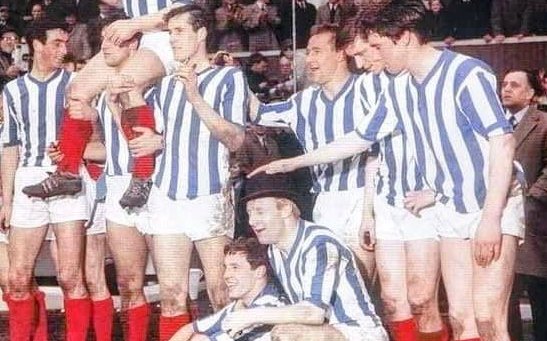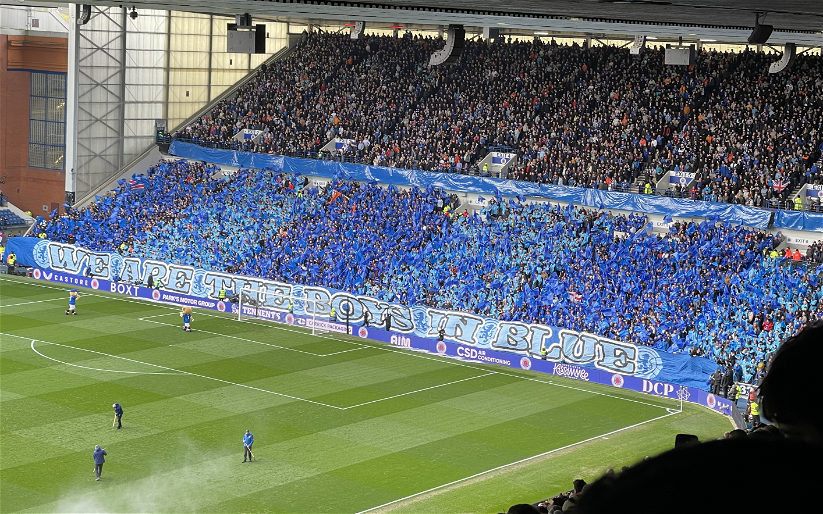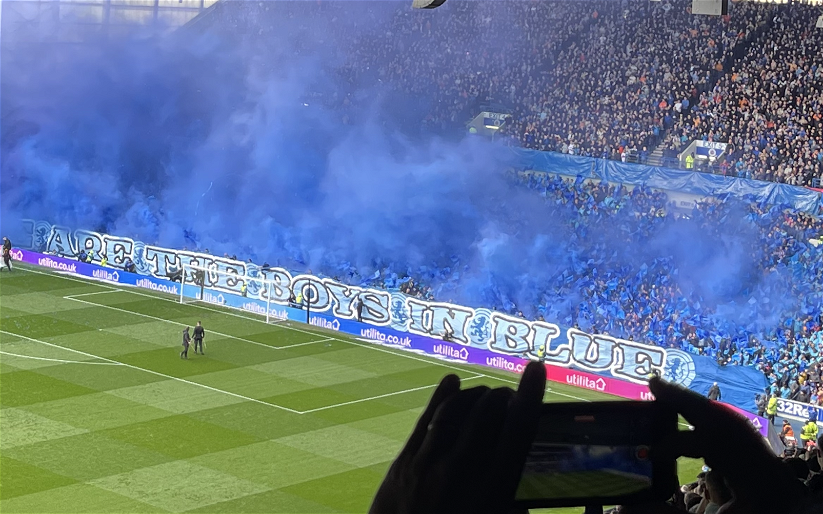By Alistair Aird
As Scottish Football swung into the sixties, Rangers Football Club were piecing together one of the finest teams ever to grace the hallowed turf at Ibrox Stadium. Managed by former player James Scotland Symon, Rangers had vied with Hearts for supremacy in the latter part of the 1950s. But by the summer of 1963 they had earned their reputation as the best side in the country.
League champions in 1960/61 and 1962/63, there had also been success in the Scottish Cup and Scottish League Cup and the small matter of becoming the first British club to reach a major European final. That had been against AC Fiorentina in the 1960/61 European Cup Winners’ Cup and although they lost 4-1 on aggregate, Rangers were a force to be reckoned with both at home and abroad.
The team Symon had assembled was based on attacking flair and obdurate defence. In goal he could call upon the dependable Billy Ritchie and in Bobby Shearer and Eric Caldow, he had two of the finest full-backs of that generation. And when Caldow broke his leg at Wembley in 1962, the Rangers manager was able to draft in a solid replacement in the shape of Davie Provan.
Symon’s half-back line comprised the imposing figure of Ronnie McKinnon at centre-half, the emerging John Greig at right-half and the mercurial James Curran Baxter at left-half. Signed from Raith Rovers in the summer of 1960, Baxter was the final piece of the jigsaw. His prompting and probing from the middle of the park made Rangers tick and he strutted his stuff at a consistently high level almost every week.
In the forward line Willie Henderson was an outstanding outside-right and on his inside was the cool, calm, collected and extremely talented Ian McMillan. When you add to that the terrific trio of Jimmy Millar, Ralph Brand and Davie Wilson – between them they had scored 115 goals in season 1962/63 – no wonder Rangers found so much success at that time.
Season 1963/64 would witness the zenith for that team. But it would kick off without Rangers’ stellar striker in position. Bothered by a back injury for some time, Jimmy Millar was absent when the campaign kicked off, his number nine jersey claimed by a youngster by the name of Jim Forrest.
Any notion that the absence of Millar would weaken Rangers and blunt their firepower was quickly dispelled when Forrest made an electrifying start to the season. Back then the curtain was raised with League Cup ties, the teams in Scotland’s top two divisions being bracketed in sections, with the winner of each making it through to the quarter final.
Rangers were in Section 4 alongside Celtic, Queen of the South and Kilmarnock. And when the action started at Parkhead it was Forrest who fired Rangers to victory. He scored twice and another youngster, George McLean, got the other goal in a comfortable 3-0 win. It would be the first of five victories Rangers registered against their Old Firm rivals that season.
A 5-2 win over Queen of the South followed before Kilmarnock, considered one of the main challengers for honours in that era, were thumped 4-1 at Rugby Park. Rangers were in swashbuckling form. Although they drew their opening league match against Dundee, that was just a stumble, for they regained their balance and poise in spectacular fashion just three days later when Celtic came to Ibrox and were thrashed 3-0.
Playing against the wind, Celtic had the better scoring chances in the first half but Rangers led at the interval thanks to a header from the diminutive Davie Wilson. Further goals in the second half from Ralph Brand – a penalty kick after Forrest had been impeded – and Forrest confirmed Rangers’ superiority.
The third goal by Forrest was rated by some observers as his finest yet in a Rangers jersey and, clearly imbued with confidence, the youngster scored four goals in his next outing, a 5-2 win over Queen of the South at Palmerston Park. That sealed Rangers’ place in the last eight, although two goals in the last two minutes earned Kilmarnock a 2-2 draw at Ibrox in the sixth and final sectional tie and thus denied Rangers a 100% winning record.
Focus shifted temporarily to the league after the draw with Kilmarnock and a third meeting of the season with Celtic. This was a Celtic side ensconced in one of the most doleful periods of their history. They hadn’t won the league title since season 1953/54 and had ended season 1959/60 in ninth place. They had fared a little better in season 1962/63 but still finished fourth, 13 points adrift of champions Rangers. Their rebirth was on the horizon but for the third time in a matter of weeks they succumbed to a Rangers side that were simply rampant. Celtic did take the lead through Stevie Chalmers but second half goals from McLean and Brand ensured the points stayed at Ibrox.
That was the precursor for a run of five league games in which Rangers did not concede a goal. In that spell the goals flowed freely, with a total of 20 netted. Forrest helped himself to nine of them and included in his haul was a hat-trick in a 3-0 win over Partick Thistle and four goals in a 5-0 thrashing of Third Lanark at Cathkin Park. Indeed Forrest’s form was so good that when Jimmy Millar returned to the first team he did so at inside-forward rather than in the number nine jersey he had made his own in previous campaigns.
At this point a touch of perspective is required. There is no doubt that Rangers were swatting aside the domestic challenges with consummate ease. In tandem with their run of victories in the league, East Fife and Berwick Rangers had been defeated in the League Cup to seal a place in the Final. But in the European arena the Light Blues were taught a lesson by an ageing but still imperious Real Madrid. The first leg of the European Cup tie at Ibrox was, in fairness, tight; a late goal from Ferenc Puskas earning the visitors a 1-0 win. But in Madrid Los Blancos were masterly, scoring six times without reply, with Puskas netting a hat-trick. One case for the defence that evening was the age and inexperience of the Rangers forward line – McMillan, Millar, Brand and Wilson were all absent through injury – but such was the paucity of chances created by the men in blue even the full complement of their fabled forward line would have struggled.
Thus, the sights were now set on domestic dominance. By the end of October the first piece of silverware was sitting proudly in the majestic Ibrox Trophy Room. Jim Forrest was the main man again, scoring four times against Morton, with his cousin, Alex Willoughby, netting the other Rangers goal. And league supremacy continued too, a 4-0 win over Airdrie at Broomfield on 2 November making it nine wins and one draw from the opening ten fixtures.
There followed, however, a dip. Aberdeen succeeded where up until that point only Real Madrid had in shutting out Rangers in a 0-0 stalemate at Ibrox and that was the precursor for a run of just two wins in the next six league games. That sequence included a 3-0 thrashing at home against Hearts and another home reverse when St Johnstone visited Ibrox four days before Christmas. The centre forward for the visitors that day was one Alexander Chapman Ferguson and he helped himself to a hat-trick as the Perth side won 3-2 to topple Rangers from the top of the table.
But Rangers regrouped and won the next six league games. That run included the traditional Ne’erday fixture against Celtic and it was the old stager himself, Jimmy Millar, who netted the only goal of the game. And when Ralph Brand’s early goal saw off a dogged Falkirk at Brockville, Rangers led the league again, although it was nip-and-tuck, with Kilmarnock only one point behind.
The Ayrshire side were having a terrific season and retook the lead on 9 February. As they were thrashing Falkirk 9-2 at Rugby Park, Rangers, who welcomed Davie Wilson back to the first team after an absence of four months with a broken leg, were losing at Ibrox for the third time that season, St Mirren the victors on this occasion by three goals to two.
But that as they say was that. Rangers didn’t lose again until the final day of the season and edged out their title rivals by six points. The pivotal fixture came at Ibrox on 14 March. A week earlier Rangers had beaten Celtic – again – to reach the semi-final of the Scottish Cup but there looked to have been a slip up in the title race when a point was dropped in a 1-1 draw against Aberdeen at Pittodrie just three days prior to Kilmarnock’s visit. However, it turned out to be a point gained as Kilmarnock, managed by the former Rangers winger Willie Waddell, had lost 2-1 to Dundee United on the same evening.
Rangers thus led the table by two points and rung the changes for this vital encounter. Back came Ronnie McKinnon at centre-half – he had missed the draw against Aberdeen with a cold – and there were places in the forward line for Jimmy Millar and George McLean. Neither of the two had featured since the defeat against St Mirren but the loss of Willie Henderson and Jim Forrest through injury necessitated a change. With Ralph Brand filling in on the right wing for Henderson, McLean came in at inside-left, while Millar donned the number nine jersey vacated by Forrest.
McLean repaid his manager with a goal after 26 minutes and an assist for the second goal 12 minutes later. McLean’s goal was created by a sumptuous pass by Baxter and the man nicknamed ‘Dandy’ thumped a shot beyond the Kilmarnock goalkeeper, Campbell Forsyth. And he turned provider soon after, beating two defenders on the right before firing the ball along the ground towards Millar. The big centre forward couldn’t reach it but, as he did so often in his career, Davie Wilson ghosted in from the left wing to pounce on the loose ball and score.
The defeat extinguished what was left of Kilmarnock’s challenge. Rangers showed no mercy and wins over Dunfermline Athletic and Hearts all but confirmed the Light Blues would retain the title. As the dynamic duo of Millar and Brand were securing a narrow 2-1 win at Tynecastle, Motherwell were defeating Kilmarnock 2-0. All of this meant that Rangers, with 51 points from 31 games, led Kilmarnock by six points. With a far superior goal average to boot, the Ayrshire side would have had to win their remaining three matches by huge scorelines while hoping that Rangers lost all three of their fixtures.
Unsurprisingly this did not come to pass, for just three days later, first half goals from Brand and McLean gave Rangers a 2-0 win over Dundee United and the league title was secured. The only blot on the copybook was a final day defeat against St Johnstone at Muirton Park, the 1-0 loss ending Rangers’ unbeaten away record in the league.
But the players could be forgiven for that defeat as it came just four days after the Scottish Cup Final against Dundee at Hampden. With the league championship and League Cup secured, this Rangers side stood on the cusp of becoming just the second side in the history of Scottish Football to secure the domestic Treble. It was the Rangers side with the famous Iron Curtain defence back in season 1948/49 that had been the first to win the three major trophies in the same season but many argue that this side was a better one.

Standing in the way of a place in the history books were a Dundee side who had not only won the league championship as recently as 1961/62 but had also reached the semi-finals of the European Cup the following season. They were a formidable opponent as demonstrated by their 4-0 thrashing of Kilmarnock in the semi-final.
For their part Rangers had made the Final by losing just a single goal – a late consolation for Stenhousemuir in a 5-1 first round tie – and scoring 20. Aside from the fifth victory of the season over Celtic mentioned earlier, the highlight was a 9-0 thumping of Duns that featured four goals from Millar and a hat-trick from Brand.
Impressive stats but for over 70 minutes of the final at Hampden, try as they might, Rangers couldn’t breach the Dundee rear-guard. That was down, for the most part, to the imperious and defiant display of the Dundee goalkeeper, Bert Slater. Time after time his reflexes denied the Rangers forwards before that man Millar eventually got the better of him with a towering header. But Rangers were ahead for barely a minute – Kenny Cameron equalised for Dundee – and thereafter the pummelling continued until Dundee could hold out no more. There was barely a minute left when Millar again rose to meet a Henderson cross and float a header in to the net. And seconds later the cherry was placed in the icing on top of the cake when Brand devoured the rebound after Slater had parried a shot from the effervescent Wilson.
And with that swish of Brand’s foot history was made. Rangers had the fabled Triple Crown and their status as masters of all they surveyed in Scotland was secured. In the celebrations that followed Davie Wilson donned the vice-chairman’s bowler hat and, with captain Shearer held shoulder-high with the trophy, Brand doused his team-mates with a bucket of cold water.
European supremacy appeared to be the next target for this all-conquering Rangers side but that never materialised. Instead they struggled to maintain their domestic dominance and the title win in 1963/64 would be the Light Blues’ last for ELEVEN years! Rather than build a team the Treble winning squad was slowly broken up. Within a year the brilliant Baxter had left for Sunderland and soon after mainstays such as Millar, Brand, Wilson and Caldow were off to pastures new too.
What is inescapable, however is that this was one of the greatest-ever Rangers teams. The Scottish game in the early 1960s was not like it is now. The race for the league title was keen one, not just a joust between Rangers and Celtic. The fact Scot Symon masterminded the success he did in the face of the challenges that were presented means he deserves to be considered as one of the club’s greatest-ever managers. As for the players, well their names still trip off the tongue of the fans from that era and their place in the pantheon of great Rangers is undoubtedly secure.




